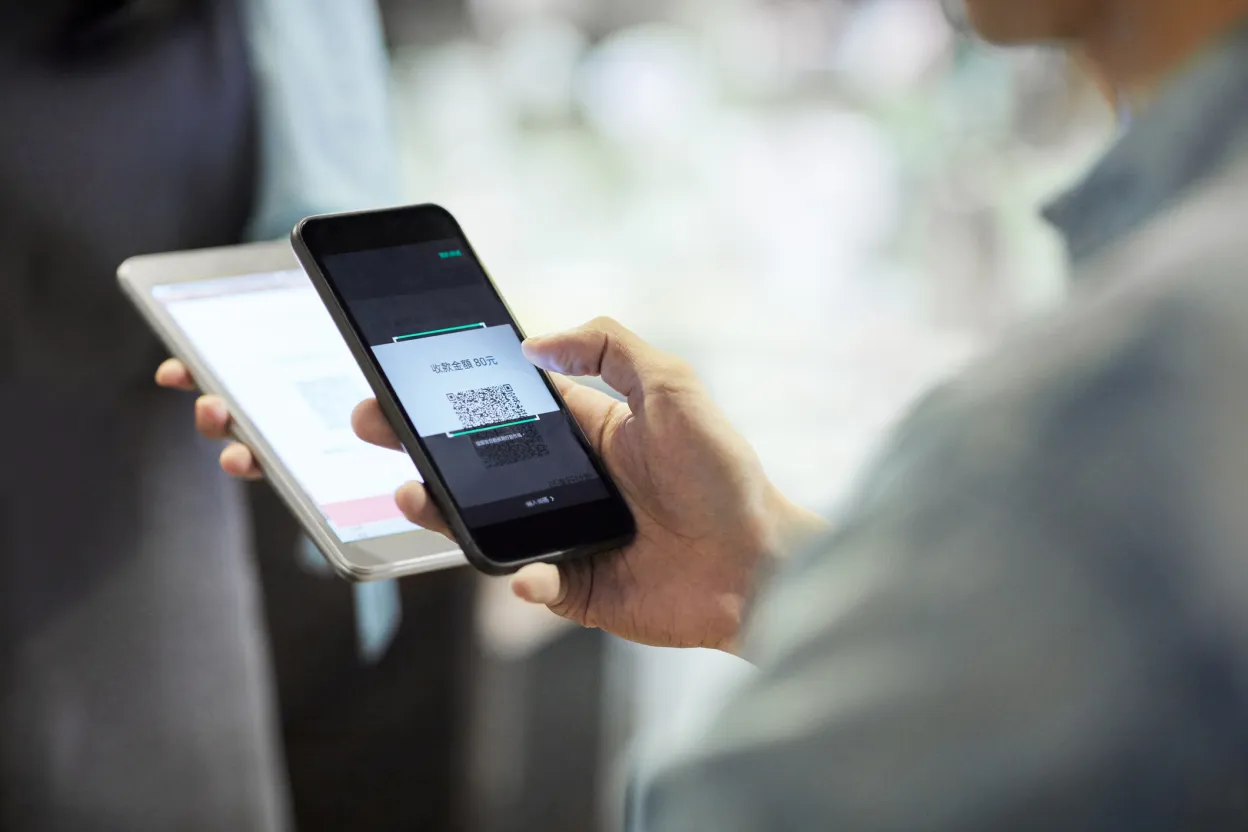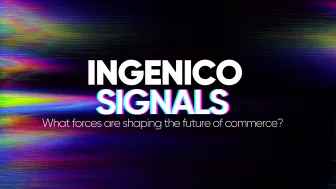IDEIAS ALTERNATIVAS - Ajudar os retalhistas a adotar o número crescente de métodos de pagamento alternativos
Ouça este artigo.

Em todo o mundo, os consumidores estão a adotar um número crescente de métodos de pagamento que vão para além dos tradicionais cartões e dinheiro. Os chamados métodos de pagamento alternativos (APMs) estão a remodelar a forma como as pessoas pagam - tanto online como, cada vez mais, na loja.
Alguns relatórios estimam que existem cerca de 200 APMs diferentes, enquanto outros sugerem que o número se aproxima dos 450 - ou mesmo dos 900. Qualquer que seja o número exato, uma coisa é certa: a aceitação de novos métodos de pagamento está a acelerar rapidamente.
Uma mudança nas expectativas dos consumidores
Vejamos o caso das carteiras digitais e móveis. O World Payments Report 2021 da Capgemini revelou que quase 45% dos consumidores utilizam frequentemente carteiras móveis para efetuar pagamentos, quase o dobro dos 23% registados no ano anterior.
Embora os APMs inicialmente tenham ganhado força online, as expectativas agora estão a mudar para pagamentos digitais na loja. Um inquérito realizado em 2021 pela Blackhawk Network revelou que 63% dos compradores estavam mais propensos a comprar a um retalhista que aceitasse os seus métodos de pagamento online preferidos na loja, e 73% dos inquiridos esperavam uma experiência omnicanal perfeita, pagando da mesma forma independentemente do canal.
O que significa método de pagamento “alternativo”?
O termo método de pagamento alternativo referia-se originalmente a tudo o que não fosse dinheiro ou cartões de crédito e débito tradicionais. Mas, à medida que o panorama dos pagamentos evoluiu, também evoluiu o significado da palavra “alternativo”.
Para mais de mil milhões de utilizadores do Alipay, os pagamentos móveis não são uma alternativa - são o padrão. Nos países nórdicos, carteiras como a MobilePay, a Vipps e a Pivo são amplamente utilizadas por centenas de milhares de comerciantes. E em muitos mercados, o Apple Pay e o Google Pay tornaram-se escolhas quotidianas na caixa.
À medida que estes métodos se tornam comuns, o rótulo “alternativo” parece cada vez mais desatualizado. Em resposta, muitos no sector começaram a referir-se a eles como “novos métodos de pagamento”, mas mesmo isso pode ser enganador - algumas destas soluções já existem há mais de uma década.
Em vez de se concentrar na terminologia, é mais prático agrupar os métodos de pagamento em grandes famílias - como cartões, carteiras móveis, códigos QR, transferências bancárias e muito mais. Cada família serve diferentes casos de utilização, regiões geográficas e preferências dos consumidores.
A chave para os comerciantes não é determinar qual o método “melhor”, mas sim oferecer a combinação correta de opções de pagamento, para que cada cliente possa pagar da forma que preferir.
Códigos QR: De nicho a una nova norma
Os códigos QR podem ter-se tornado mais visíveis durante a pandemia, mas a sua utilização nos pagamentos já estava a crescer de forma constante antes dessa altura. Na China, os pagamentos por código QR estão bem estabelecidos. Nas regiões centradas nos cartões, estão agora a ganhar força - em especial entre os consumidores mais jovens e que privilegiam os telemóveis.
A pandemia não só acelerou a adoção, como também ajudou a impulsionar uma mudança mais ampla dos pagamentos pull (iniciados pelo comerciante) para os pagamentos push, em que o cliente lê um código QR e inicia a transação a partir do seu próprio dispositivo.
Esta mudança traz vantagens importantes:
- Apoia os hábitos que dão prioridade aos telemóveis
- Coloca mais controlo nas mãos dos consumidores
- Permite que os turistas internacionais utilizem aplicações familiares como o WeChat Pay ou o Alipay quando fazem compras no estrangeiro
À medida que as viagens globais recomeçam, a capacidade de aceitar pagamentos por código QR na loja está a tornar-se uma forma importante de os comerciantes servirem tanto os clientes internacionais como os consumidores mais jovens e experientes em tecnologia no seu país.
Uma nova forma de segmentar o mercado
O aparecimento de novos métodos de pagamento está também a introduzir novas formas de segmentar a experiência de pagamento com base nas necessidades e comportamentos dos clientes.
Esta ideia não é nova. Os primeiros cartões de crédito, por exemplo, visavam públicos específicos - como os viajantes frequentes ou os consumidores abastados - antes de serem adoptados em massa. Com o tempo, os emissores e os adquirentes aperfeiçoaram as suas estratégias para servir diferentes segmentos e casos de utilização.
Os APM actuais estão a seguir uma trajetória semelhante. O que começa como um método popular numa região ou grupo demográfico - códigos QR na Ásia, por exemplo, ou carteiras móveis entre a Geração Z - pode rapidamente tornar-se uma caraterística esperada em mercados mais alargados.
Os retalhistas que pretendam manter-se competitivos têm de garantir que estes novos métodos de pagamento são aceites no ponto de venda - e não apenas online.
Como a Ingenico ajuda os retalhistas a manterem-se na linha da frente
Na Ingenico, ajudamos os retalhistas a adaptarem-se a este cenário em rápida mudança com soluções flexíveis e seguras concebidas para o comprador omnicanal de hoje. A nossa gama de terminais baseados em Android e as ferramentas de fácil desenvolvimento facilitam:
- Aceitar pagamentos por QR code, quer apresentando um código no terminal, quer digitalizando um código a partir do dispositivo móvel de um cliente
- Suportar uma grande variedade de carteiras móveis e APMs locais, incluindo aplicações internacionais como o Alipay e o WeChat Pay
- Proporcionar uma experiência de pagamento consistente e segura na loja que se alinhe com as expectativas online
- Acelerar a implementação através de SDKs, APIs e opções de integração flexíveis
Ao ajudar os comerciantes a expandir a sua aceitação de pagamentos, a Ingenico torna mais fácil servir todos os clientes - onde quer que estejam, como quer que escolham pagar.
Pretende oferecer mais opções de pagamento no checkout? Contacte-nos para descobrir como a Ingenico pode ajudá-lo a preparar a sua experiência na loja para o futuro.









